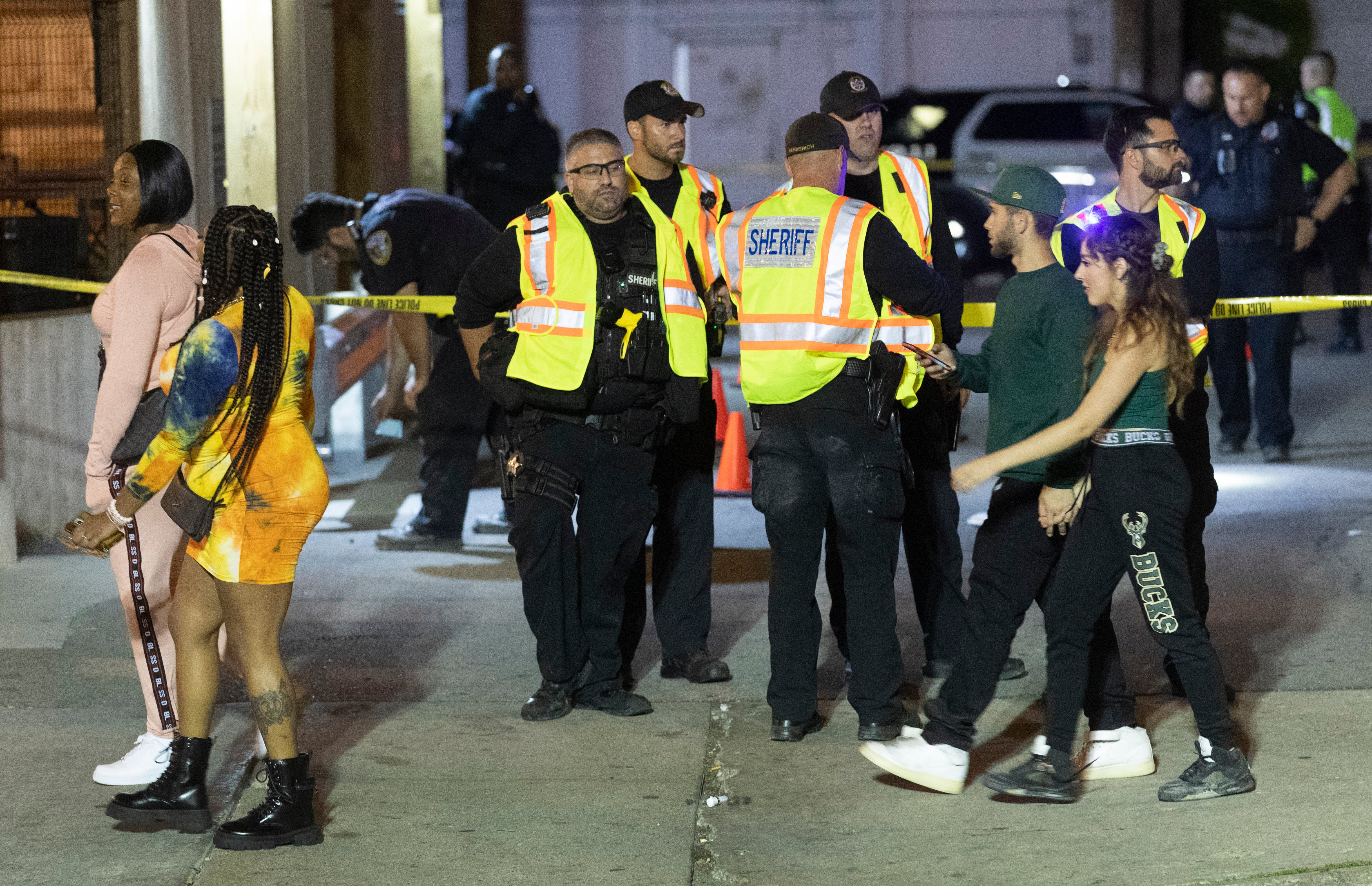430 dead in one week as US heads for worst year of gun violence in decades
Violence is set to surpass shootings in 2020, which was already a record year

A raucous celebration in Wisconsin for the Milwaukee Buck’s NBA championship win. A group of teenagers fooling around in a church parking lot in Utah. A crowded store in West Philadelphia. A woman escaping domestic violence with her young child in Kansas. A 15-year-old playing video games with a cousin in his bedroom in San Antonio. These are just some of the places where America’s record-breaking gun violence epidemic reared its head over the last week.
Between 17 and 23 July, there were at least 915 shootings across the US, killing at least 430 and wounding more than 1,000 people, according to an ABC News analysis of data from the Gun Violence Archive, a non-profit group.
The wave of shootings puts the country on track for another record year of gun violence, after 2020 hit headlines as the deadliest in at least two decades, with more than 43,000 gun deaths. This year, there have been more than 24,000 reported so fat. Last week, someone was shot at every 10 minutes.
“This week is indicative of a big longer-term systemic issue where people are becoming afraid to go out to parks and afraid to go to malls because they know when they go to a baseball game, there is going to be a drive-by [shooting],” Mark Bryant, the executive director of GVA, told ABC. “It’s been a very average week and we should be horrified.”
The shootings, which ranged from gang battles to mass shootings to domestic violence and suicide, were disproportionately concentrated in areas already disadvantaged in other ways: poor, urban areas, with large communities of colour, which still carry the legacies of decades of under-investment and segregation.
“Gun violence is highly concentrated in neighbourhoods with high rates of economic deprivation, trauma associated with past violence and now COVID, and poor access to resources,” said Boston University expert Jonathan Jay earlier this year, reflecting on the rise in shootings amid a broader increase in violent crime.
“They’re also the most physically deteriorated and least conducive to community-building in shared spaces. We need to see that it’s not a coincidence that all of these burdens fall overwhelmingly on people of colour, especially Black people.”
While Americans bought record numbers of guns during the pandemic, one recent study, from the University of California Davis’s Violence Prevention Research Program, found that the rise in shootings was not linked to the rise in gun sales.
“We need to be looking at other factors, like job loss, economic change, the closure of schools and community organisations and nonprofits, and civil unrest,” Julia Schleimer, the lead author of the new study, told The Guardian earlier this month.
But changing the bloody status quo seems as unlikely as ever. Most Americans support tougher gun laws, but America is also the most heavily armed society in the world, with 121 firearms for every 100 people. Despite seemingly endless shootings, including mass tragedies in cities like San Jose and Atlanta, state and federal legislators have done little to combat shootings or address the underlying social disparities that cause them.
On the campaign trail, Joe Biden talked of an ambitious agenda to combat gun violence, including banning assault weapons and high-capacity magazines, voluntarily buying back guns, and ending legal protections for gun manufacturers.
But so far, aside from a few modest executive actions during the spring, Democratic legislation that would close loopholes in background checks and give authorities more time for security screenings haven’t been able to make it further than passing in the House of Representatives.
In the Senate, where each state gets two representatives, regardless of population, small, conservative states with large rural populations and high gun ownership exercise disproportionate influence, even as the clout of organisations like the National Rifle Association has declined in recent years amid lawsuits and scandal.
Join our commenting forum
Join thought-provoking conversations, follow other Independent readers and see their replies
Comments